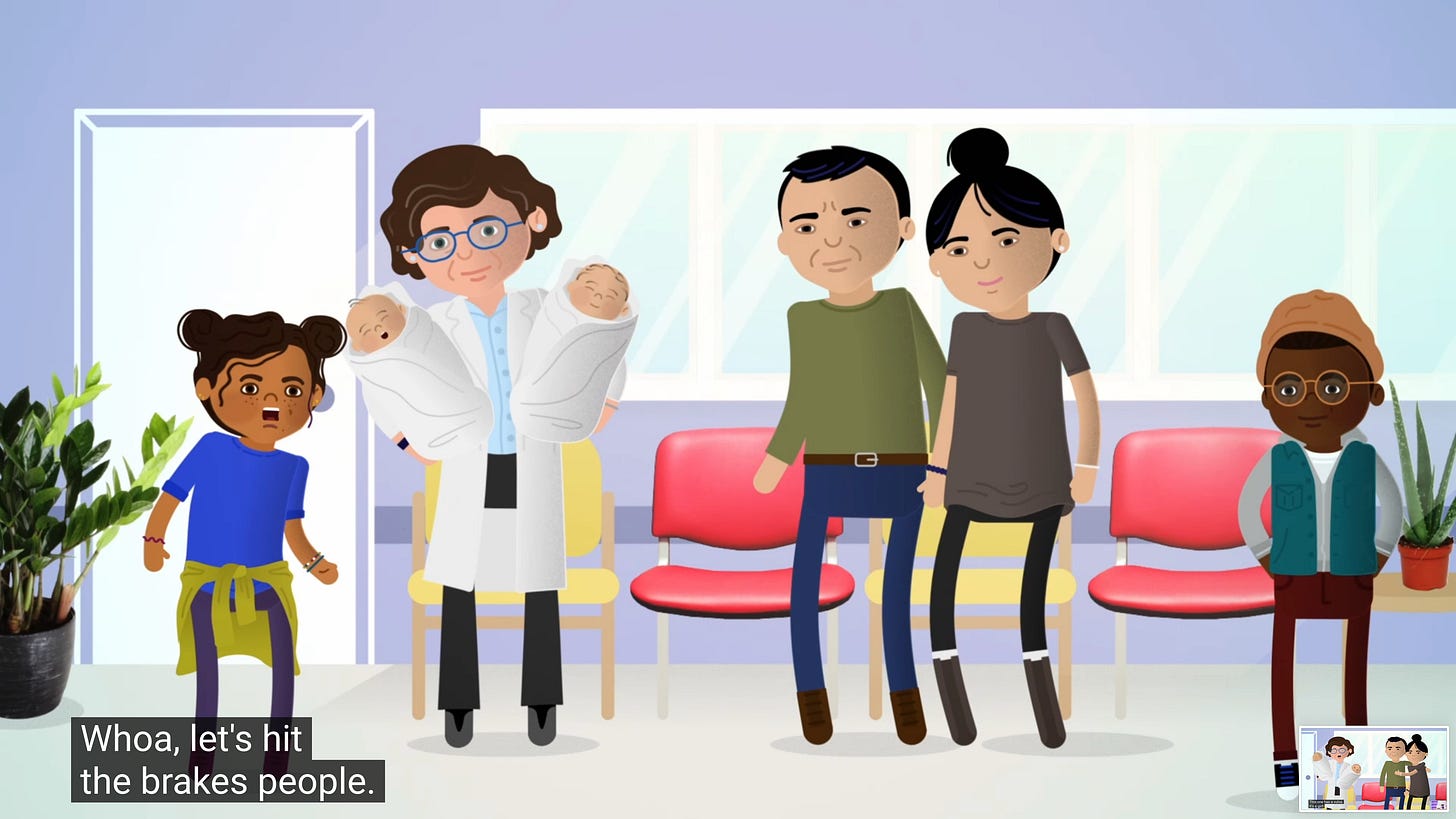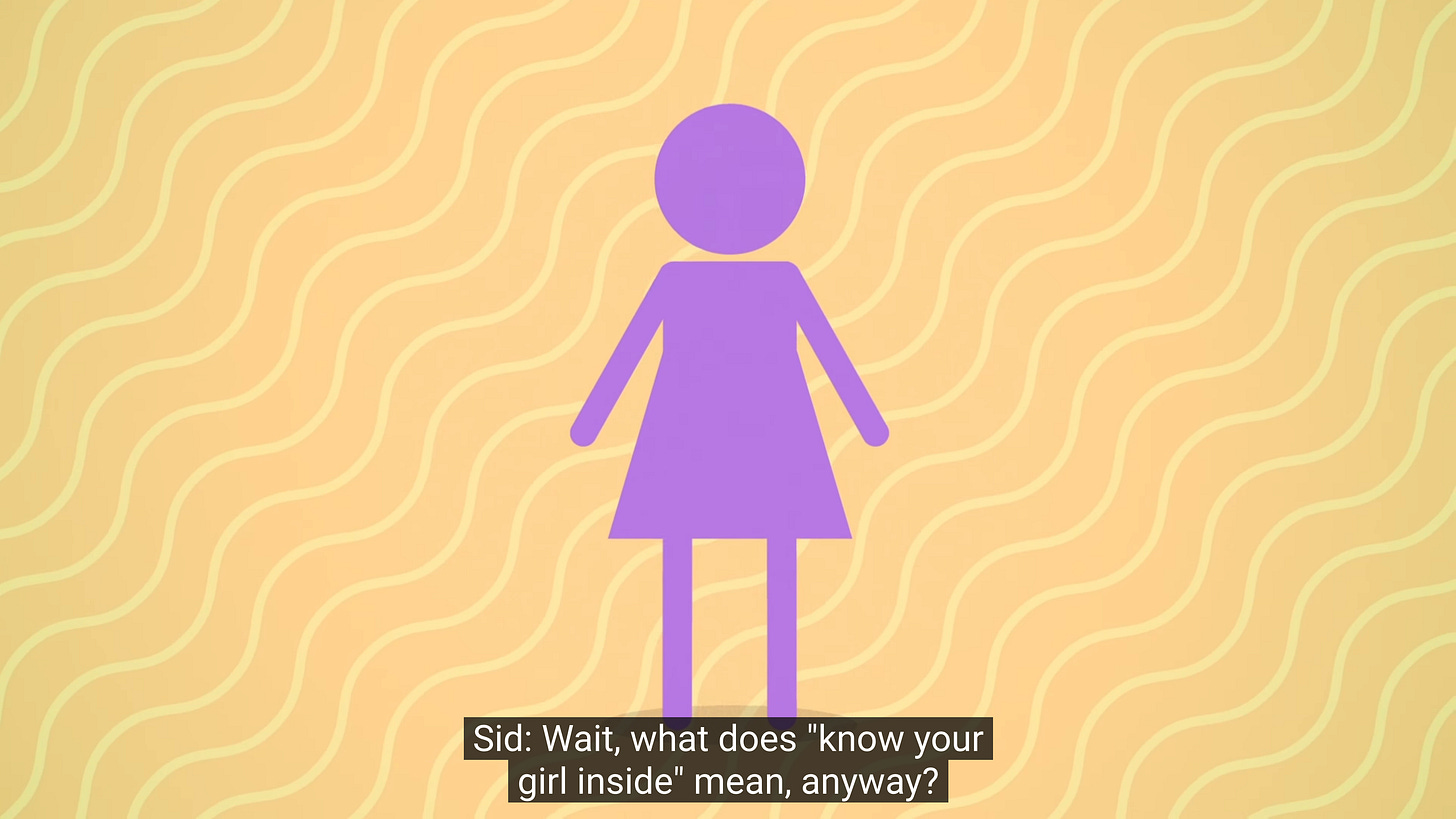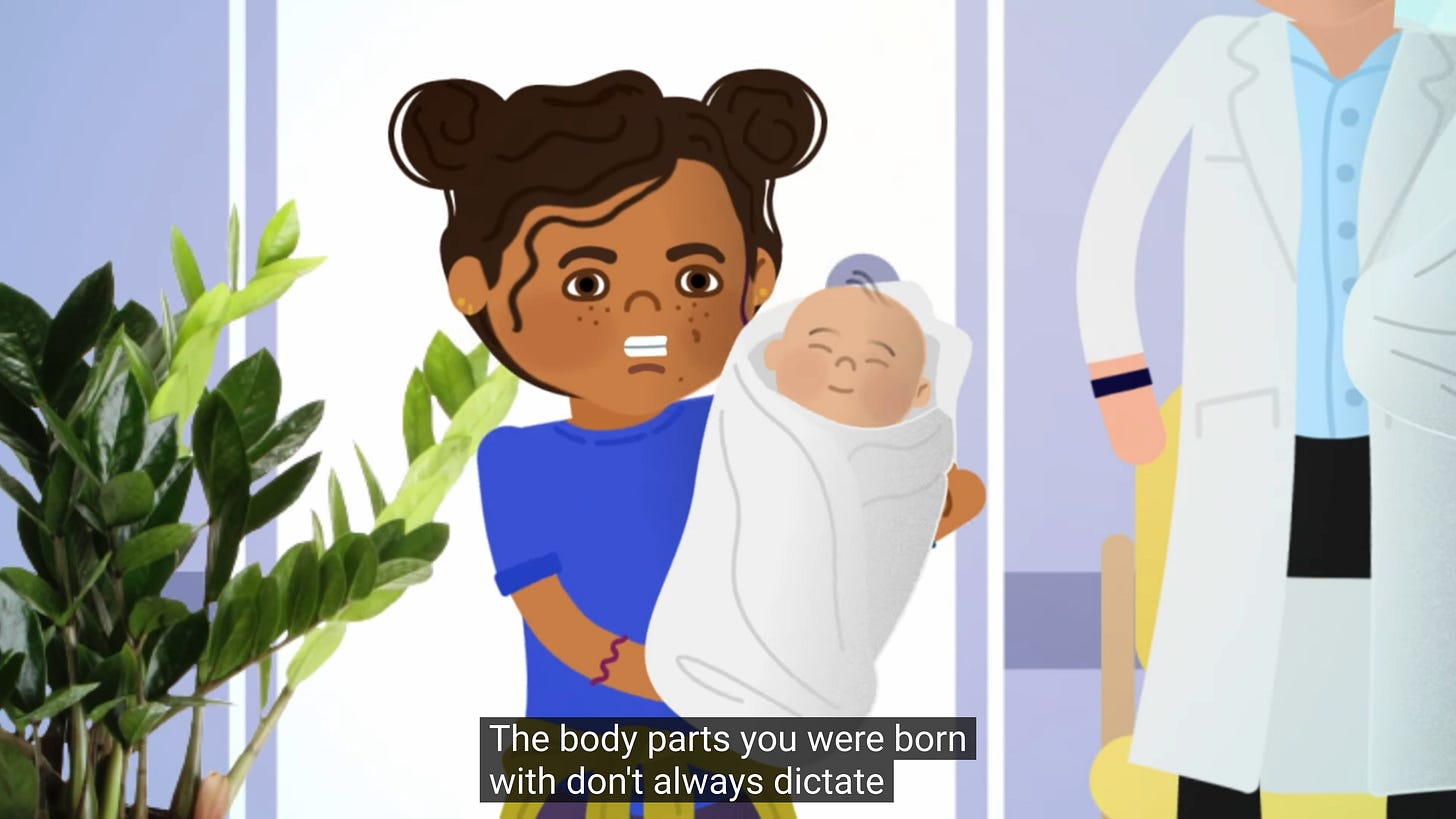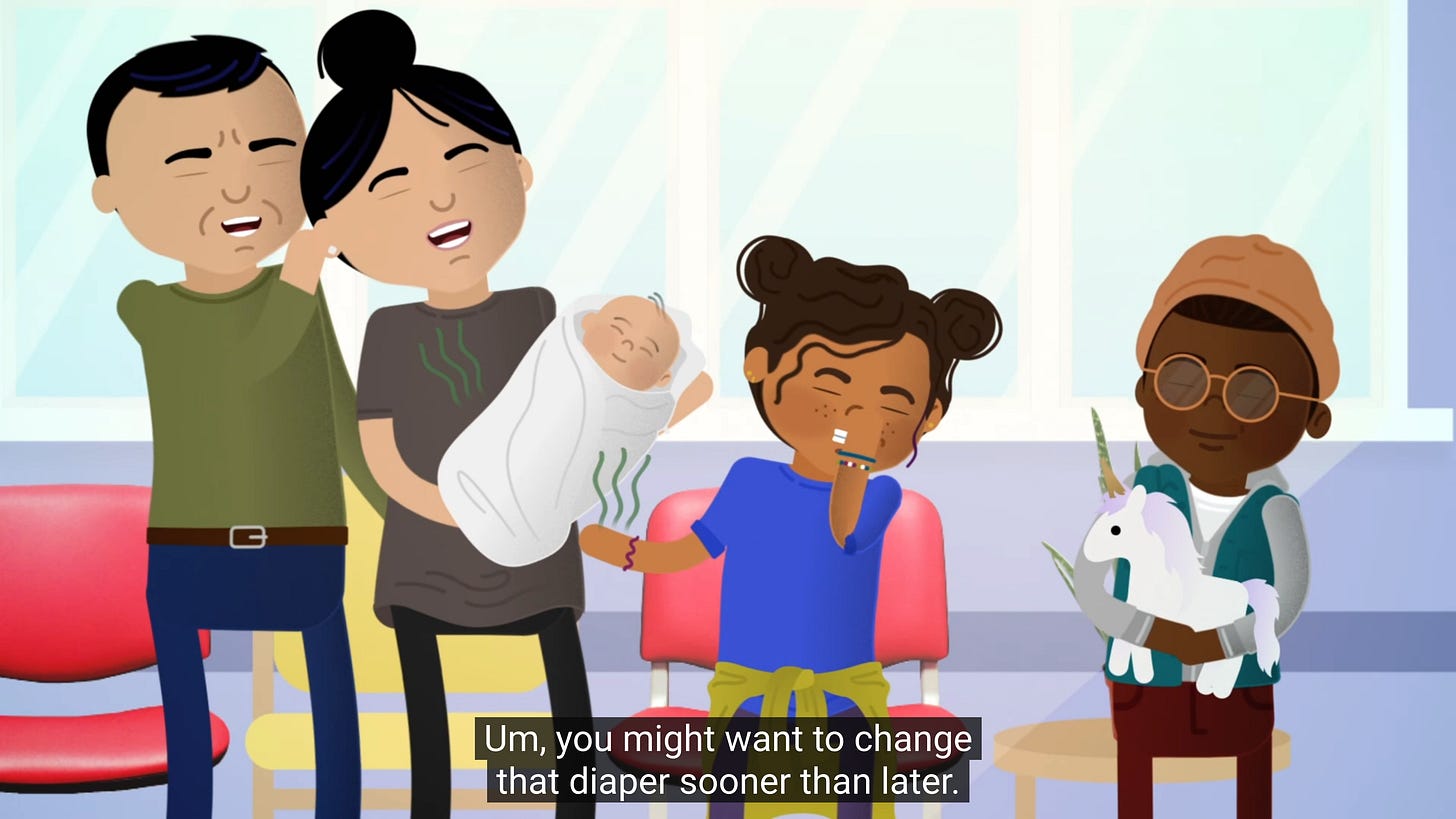Only 3 MORE WEEKS to Submit Your Comment on DESE'S new Health Framework!
Today we expose a Framework-aligned resource found in Milford, where teachers and principals think it's ok to show kids dumb YouTube videos that rewrite basic biology.
It's time for another friendly reminder to send DESE your public comment on the new draft Comprehensive Health and Physical Education Framework.
Every week until the public comment period is over, we will be highlighting one objectionable area of the framework and providing you with an example of curricula that would align with the Framework.
To see our previous countdown posts, click HERE, HERE, HERE and HERE.
Today we are highlighting Gender Explained, a video resource from CBC Kids News. CBC Kids News is a Canadian state-funded organization that produces news videos for kids and provides them for classroom use. Most people know that gender ideology is very entrenched in Canada - even more so than in the United States. But most of us probably don’t realize that, thanks to the internet, the same videos shown in a Canadian classroom could be used in your child’s class in MA. And that’s exactly what happened earlier this year at Stacy Middle School in Milford, MA. Stacy 6th graders were shown Gender Explained with NO advance notice to parents.
This video is simultaneously ridiculous and destructive on a number of levels, and that’s a problem for Milford parents and students. But if DESE’s draft Framework passes, it could be a problem for ALL MA public school families. And that’s because the nonsensical beliefs taught in Gender Explained align PERFECTLY with this standard for 6th-8th grade students. You can find it on page 33 of the draft Framework:
Gender, Sexual Orientation, and Sexual Health [6.3.GS]
1. Explain how assigned sex, gender identity, and gender expression are distinct concepts and how they interact with each other.
Ironically, despite its name, Gender Explained attempts to explain what gender means… but fails. The concept of gender identity is confusing to begin with, and somehow the folks at CBC Kids (and Stacy Middle School) managed to make it even more so.
But don’t take our word for it, watch the video for yourself here:
Or, if you don’t want to be tortured by music that sounds like a bad nursery rhyme/merry-go-round mashup, you can read the full transcript (and enjoy some visual aids) here:
Scene: Sid and Ruby, two apparent tweens, are saying hello to the babies in a hospital nursery.
Sid: Awe. Hi, baby. Are you a boy or girl?
Ruby (Narrator): Funny you should ask Sid. One of the first things they check when a new baby is born is what kind of body parts they have. They do that to determine a baby's sex. Most of the time, it's easy to determine, and sometimes it's more complicated.
Doctor, to parents: This one has a penis. It's a boy! This one has a vulva. It's a girl! Congratulations!
Ruby: Whoa, let's hit the brakes people. The way your body looks on the outside is only part of the story.
Parents and Doctor: [exclamations] What?
Ruby: [sighs] Stay with me gang. This is important. (To baby: Hi, little one.) Your sex refers to your physical body parts, remember? But there is also something called gender which is how you feel inside your body and who you know yourself to be. And your gender, how you feel on the inside, doesn't always match the sex you were called when you were born.
Sid: OK.
Ruby: Let's say you were born with a penis and you feel like a boy inside. In that case, your sex and your gender match.
Sid: Well, what if you were born with a penis and you know you're a girl inside, not a boy?
Ruby: Then your sex and your gender don't match.
Sid: Wait, what does "know your girl inside" mean, anyway? Does that mean you have to love pink things and princesses?
Ruby: Nope. Sometimes people refer to things as girl things and boy things, but this is just how people sometimes classify things, usually to make it easier to sell stuff to kids and their parents. Clothes, toys, and games are for everyone. You don't have to be a boy or a girl to like a certain thing. Sid, has anyone ever told you that you shouldn't play with something or wear something because you're a boy?
Sid: Well, yes.
Ruby: The body parts you were born with don't always dictate who you are, how you feel, or what you like to play with.
Sid: Ah, that's such a relief.
Ruby: Gender, how you feel and who you know yourself to be, tells you who you are and there are a whole bunch of possibilities. Figuring out what feels right for you is just part of growing up.
Ruby: (To baby: Bye, little cutie!) (To parents: Um, you might want to change that diaper sooner than later.)
And… scene.
It’s safe to say the baby’s diaper is symbolic of this entire video. It stinks. And it needs to be changed.
I’m confident that our discerning readers don’t need me to point out every problem with this video, so I’ll just hit the high (low?) notes here.
First: a young child is educating adults on what gender and gender identity mean. This appears to be a trend, because the Amaze video we talked about last week did the same thing! In Gender Explained, sassy know-it-all Ruby interrupts a doctor and two new parents to inform them that they’ve got it all wrong - being born with a penis or vulva doesn’t make you a boy or a girl. Gender identity is what you feel inside. And rather than the adults in the room correcting Ruby, they go along with it, all of which must be very confusing to poor Sid who just wanted to say hi to a baby and didn’t ask for a dissertation on gender ideology.
In positioning the child as expert, these videos seek to undermine parents and the traditional values a child might have learned at home. They plant the seed that children might know more than their parents on an idea that is as old as humanity itself: a concept that, while ridiculous, attempts to erode parental authority.
Second: Sid asked the most important question in the video, which is: “what does ‘know you’re a girl inside’ mean, anyway?” followed by “Does that mean you have to love pink things and princesses?” Ruby’s answer was basically no, toys aren’t inherently gendered and boys and girls can play with whatever they want. But she never explained to Sid what ‘know you’re a girl inside’ means. Sid left with permission to play with his unicorn, but no answer to his real question.
And this video doesn’t answer the question of what it means to “know” you are the opposite sex on the inside, because it can’t. It only gives kids the cultish assertion: “Gender, how you feel and who you know yourself to be, tells you who you are.” And then, frighteningly, adds: “…and there are a whole bunch of possibilities. Figuring out what feels right for you is just part of growing up.”
(As if middle school wasn’t hard enough, now kids have to figure out what “gender” they are - and there are infinite possibilities. And we wonder why kids are anxious and depressed!)
So, what is the message that CBC Kids and Milford Public Schools want to send to hormonal and awkward 6th graders, just on the cusp of adulthood, trying to navigate changing bodies and developing sexual feelings? Your body doesn’t tell you if you are a boy or a girl. Your doctor and parents don’t know either, so don’t bother asking them. In fact, you understand this better than they do, and you might need to educate them. Trust your internal sense of gender, a concept we won’t define for you, because we don’t know how. It’s up to you to figure it out. But in the meantime, go ahead and play with whatever toys you want.
In the spirit of fairness, this video does get one thing right: the fact that Sid likes to play with a unicorn doesn’t mean he is actually a girl. That is, a child’s interest in a toy that is typically more appealing to the opposite sex/gender doesn’t say anything about that child’s sex/gender. It is fine for a girl to make mud pies and a boy to draw pictures. It is fine for a girl to like snakes and a boy to like kittens. It is fine for a girl to be sporty and a boy to be bookish. These are differences in personality and interests that do not dictate whether a child is male or female. But even this one truism that the video gets right somehow makes the matter even more confusing when thrown into the twisted and inscrutable context of gender ideology.
So, will DESE list CBC Kids and Gender Explained as a recommended resource? We’re not sure, but if one school is already using it and it aligns perfectly with the Framework standard (plus it’s FREE online), we think this stinker may show up in more MA schools if DESE approves these standards.
Confusing kids by telling them that they have to figure out for themselves if they are a boy or a girl is only ONE of the many reasons we urge everyone to contact DESE and tell them that its Framework is not appropriate and cannot be accepted.
To submit your comment today, click HERE to use MFI's easy submission form.
You can also read THIS POST for other ways to submit your comment. You’ll also find lots of other useful links including our extensive 33-page evaluation of the most concerning content in this draft Framework.
And finally, for folks who prefer a quick look at the issues with DESE's draft Framework, click HERE to download our pdf one-sheet. This little document is perfect for the TLDR people in your life who don't have the time for a deep dive but still want to be in the know.
As of today, there are only 21 more days until public comment ends. That’s only three weeks! So far 741 people have commented through MFI's easy online system. If you aren't one of them, send your comment in today!














